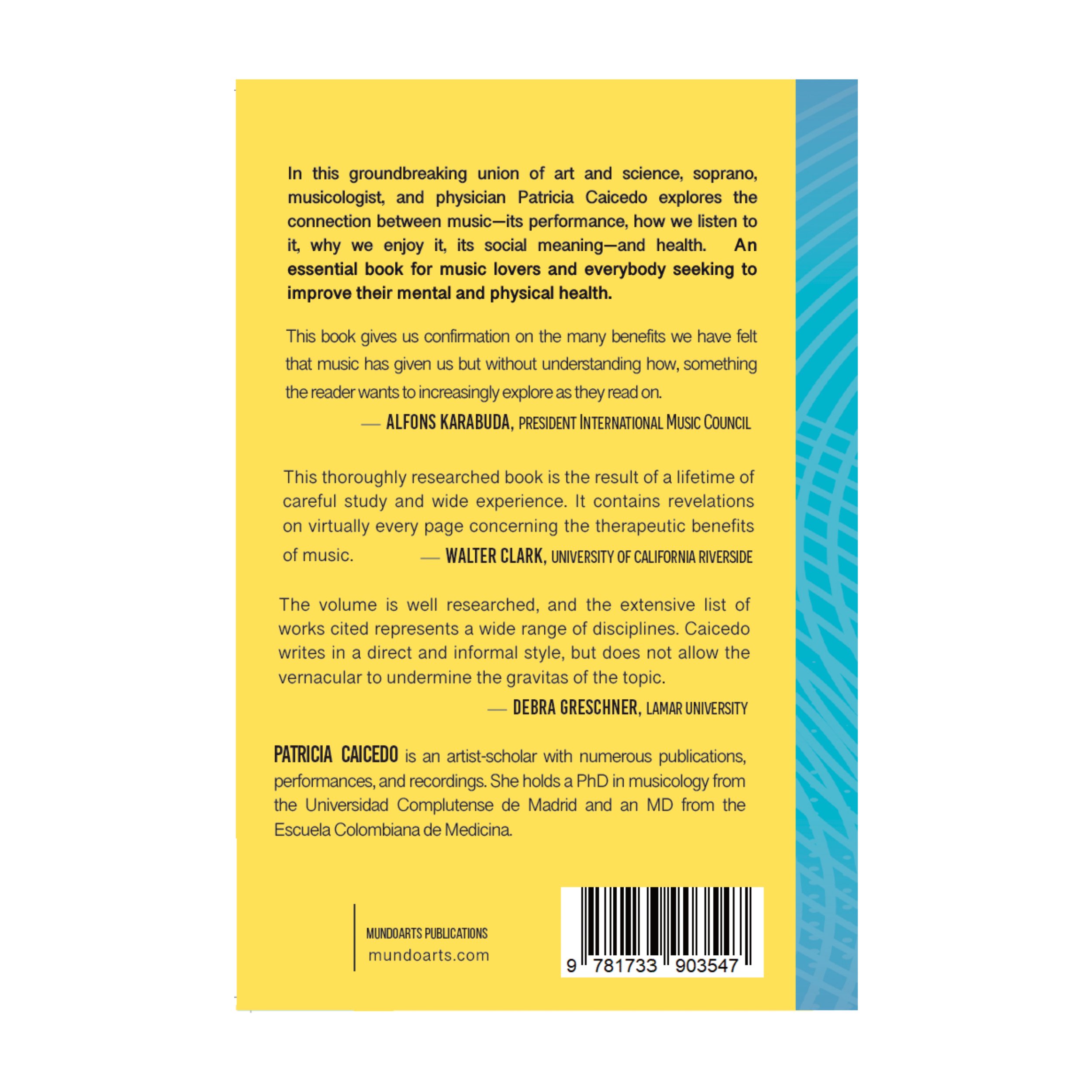A transdisciplinary book that explores the relationship between music and medicine and the impact of music on mental and physical health at an individual and social level. In light of recent neuroscientific research, you will discover the relationship between rhythm, movement, and health, the mysterious brain mechanisms that link music, pleasure, and emotion, and the many ways in which music improves our quality of life, leads to wellness, happiness and gives us a sense of purpose and meaning in life.
Click to read the review published in the Journal of Singing.
BOOK CONTENTS
Foreword by Tess Knighton ....................................... I
Prelude ............................................................. 1
Chapters
Music and Medicine: A history of a relationship ............. 7
Music and cognition ........................................ 23
The marvelous brain of musicians ......................... 35
Pleasure, emotion and music ................................... 47
Music, happiness and the meaning of life .................. 59
Rhythm, movement and health .................................. 67
Music in pain and death .......................................... 79
Voice, song, and the sounds of the body .................... 91
Music and creativity ............................................. 105
Global health, pandemic and the example of orchestras .. 115
Postlude - Exercise book . .................................. 121
1. The soundtrack of your life ............................... 122
Autobiographical exercise
A. The music of your childhood.
B. The music of your adolescence.
C. Ten songs that have accompanied the most important moments of your life.
D. Music that has accompanied you in sadness.
E. Music that gives you pleasure.
F. Music that relaxes you.
G. The songs that you are inheriting to your children.
H. The music you would like at your funeral.
2. Song Creation
Write the songs that express your essence.
B. Write a song that expresses your values and your vision of life.
C. Write a song in which you describe the person you want to become.
3. Soundscapes
A. The sounds that surround you everyday
B. The sounds of your city
C. Walking in nature
Bibliography ................................................................. 135
About the author ........................................................ 157
“As President of the International Music Council (founded by UNESCO in 1949), I have dedicated myself to safeguarding every individual’s fundamental right to access music, by explaining its values.
I can’t think of better help in this quest than with the very inspirational book written by Patricia Caicedo. It gives us confirmation on the many benefits we have felt that music has given us but without understanding how, something the reader wants to increasingly explore as they read on.
”
“Mens sana in corpore sano. “A healthy mind in a healthy body” was an ideal embraced by the ancient Greeks and Romans. The ancient philosophers extolled the efficacy of music in helping to create a perfect balance between mind and body.
Patricia Caicedo carries on this tradition and is especially well equipped to explain how we can utilize music to enhance our lives in every way. Besides being an accomplished vocalist, she holds doctorates in both medicine (M.D.) and musicology (Ph.D.). This thoroughly researched and stylishly written book is therefore the result of a lifetime of careful study and wide experience. It contains revelations on virtually every page concerning the therapeutic benefits of music. ”









